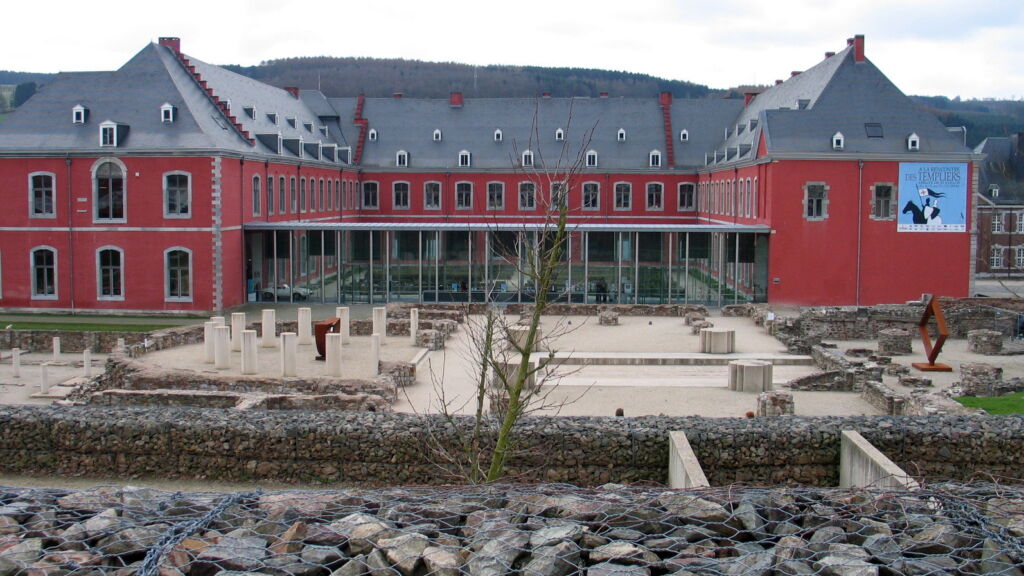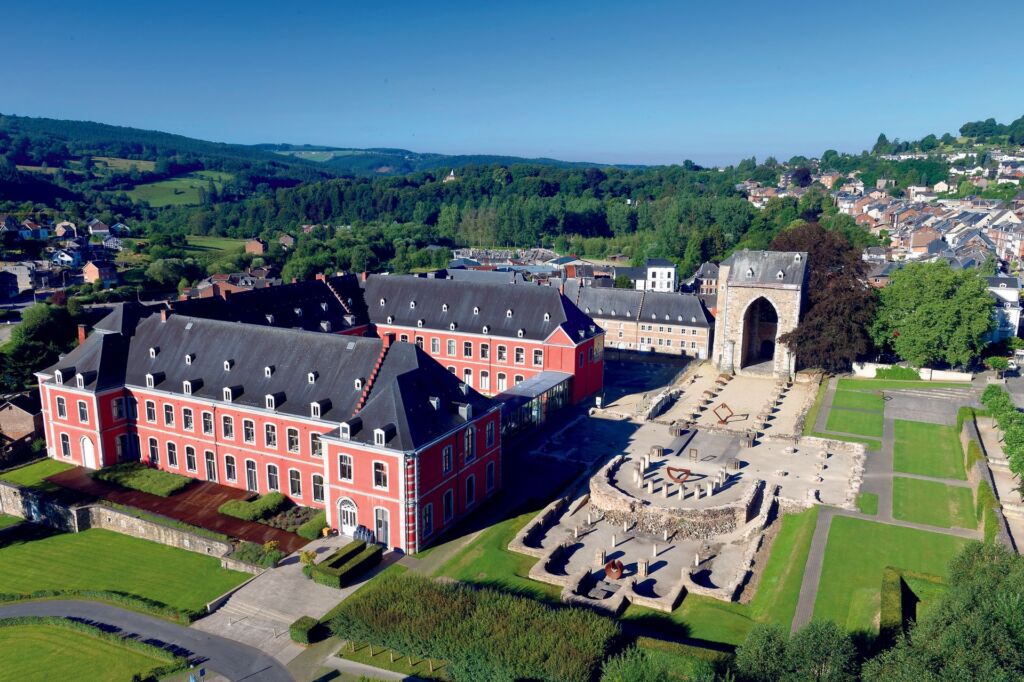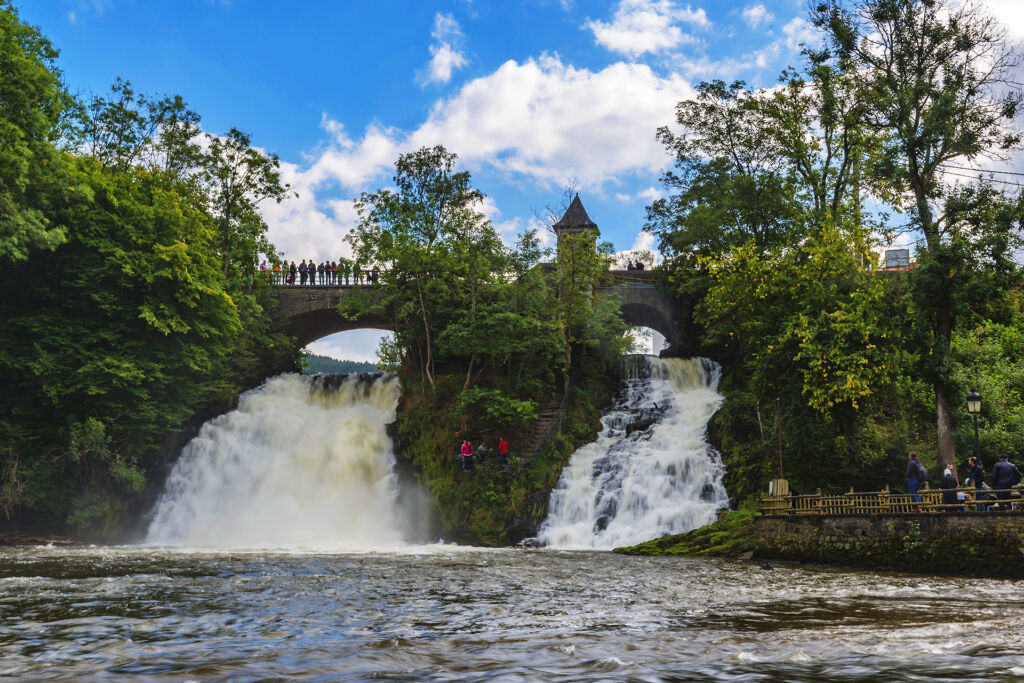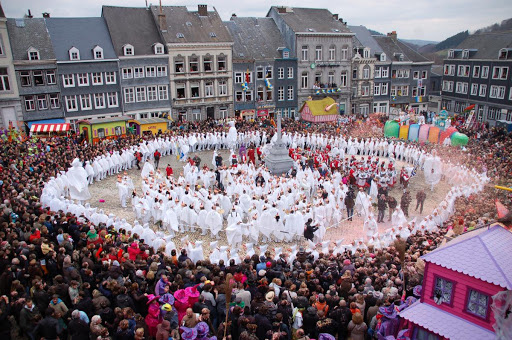To add the zest to your travelogue Stavelot is a place just for you. For more than a millennium this picturesque town in the heart of Haute Ardenne. Stavelot is a municipality town famous for being Malmedy’s capital. This little landscape has great attractions, including Abbaye de Stavelot, Musee de la Principaute, etc. It is also home to several traditional carnivals such as Laetare des Blancs-Mousses. Stavelot is a place where you visit and you feel like WoW. So grab your rockhage and leave a trail.
Address: Cour de l’Abbaye 1, 4970 Stavelot
Check out our list for more:
Abbaye de Stavelot

Abbaye de Stavelot is an excellent Abbey standing proudly in the heart of Wallonia. Laid the first stone way back in 651, the Benedictine Stavelot Abbey is one of the first monasteries in Belgium. From the 10th century, this abbey became the highly religious territory’s seat, but the once-gigantic church of the Stavelot-Malmédy was ruined in the outcome of the French Revolution.
But behind the archaeological elements that persist is a large abbey building painted a vibrant crab-red. Its museums, videos and audio guide introduce the historical affairs of the discarded principality. There’s also a fascinating series of interim exhibitions and an outstanding assortment of racing cars and motorbikes illuminating 100 years of motor racing. Today, visitors can explore the ruins and the still-standing parts of the building, including three museums.
Musee de la Principaute

The Historical Museum of the Principality of Stavelot-Malmedy proposes a contemporary, thoughtful, and delightful itinerary of the astonishing history of a State of the Ancien Régime. This museum in the corridors of the principality council building. Here, you can learn a thousand-year-old history of Stavelot and discover the influential abbots of the 7th-century era.
The museum includes an interactive experience through panels, three-dimensional reconstruction, and multimedia. Before even you get inside this museum, you will already tell from the foyer what it is all about – religion, politics, and its economic history. The museum of the Principality of Stavelot-Malmedy is located at the Abbey of Stavelot which also houses the collections of 2 other museums: the Museum of Guillaume Apollinaire and the Spa-Francorchamps circuit museum.
Cascade de Coo

If you listen carefully, you can hear the Cascade de Coo’s falling waters from any location in Stavelot. The ride to this place alone is already an experience for oneself. What’s exciting about the Cascade de Coo is that it’s partially manmade, as, in the 15th century, the Abbaye de Stavelot monks created a millrace to protect the nearby Petit-Coo village from erosion, which resulted in the fall that is today used to generate power.
The Cascade de Coo became a tourist attraction in the 19th century and is now on an estate with a children’s amusement park Plopsa Coo. Which is the true love of children.
Dropping some 15 meters, visitors can climb up the fall with a chairlift and enjoy the beautiful scenery of Haute Ardenne. The wonderful valleys, streams and waterfalls all within a small village, make it a very picturesque hub for anyone looking to revive from stress.
Eglise Saint-Sébastien

Founded at the horizon of Place du Vinave, Eglise Saint Sebastien is a must-visit milestone in Stavelot. This 1754 church contains the truly incredible casket of St-Remacle, a 1268 classic of gilded metalwork encompassing the vestiges of Stavelot Abbey’s originator, who had already been dead for 600 years before the casket’s fabrication. It contains several treasures from the Abbaye de Stavelot. One of the masterpieces of Maasland goldsmithing from the 13th century.
The Korfmacher organ from 1841 is used here regularly at concerts. Another important work is the 17th-century reliquary bust of Poppo of Stavelot. Aside from worship, the church is home to numerous treasures and other artefacts. It is one of the first Flemish pilgrims to the Holy Land. A must visit the place.
Ravel Ligne 45
During the 18th century’s Wallonia became crisscrossed by railway lines, many of which have since been decommissioned and swiveled into a provincial system of greenways forming some beautiful rugged landscape ideal for walking. It runs from West to East, you will bridge a vast part of the old Principality of Stavelot-Malmedy.
The RAVeL route runs along the Amblève valley-side, past Stavelot on a 20-kilometer route between Trois-Points in the west and Waimes in the east. Walloon diversity is paramount in this region. The paths follow the old rail-beds and give you a chance to explore Stavelot country-side. You can cycle here into the East Cantons, the youngest region of Belgium.

On the fourth Sunday of Lent Stavelot puts on one of Wallonia’s supremely brilliant traditional spectacles, which is saying something for a region renowned for its carnivals. Laetare is one of the last festivals in Belgium’s busy Lenten calendar and is held three Sundays before Easter.
There’s a bumper parade with 2,500 people taking part, with wacky floats, colorful costumes, and music by roving bands. The stars of the show are the eerie ‘Blancs Moussis’, who wear distinctive masks like sneering, blank-eyed Pinocchios. The story behind the Blancs Moussis goes around to the fling of the 16th century when the abbot restricted the abbey’s monks from putting up with a part in the festivities. It’s an incredible festival not to be missed.
